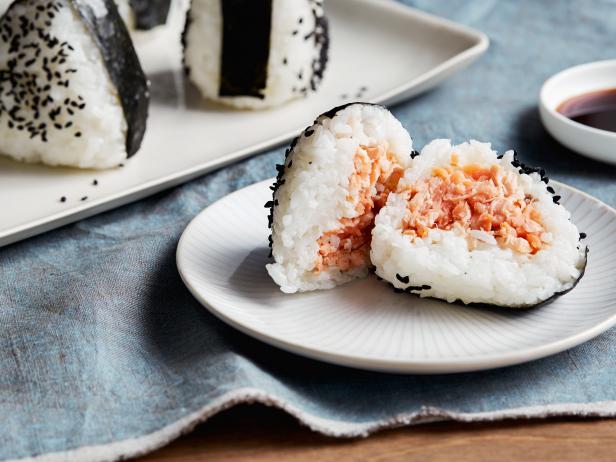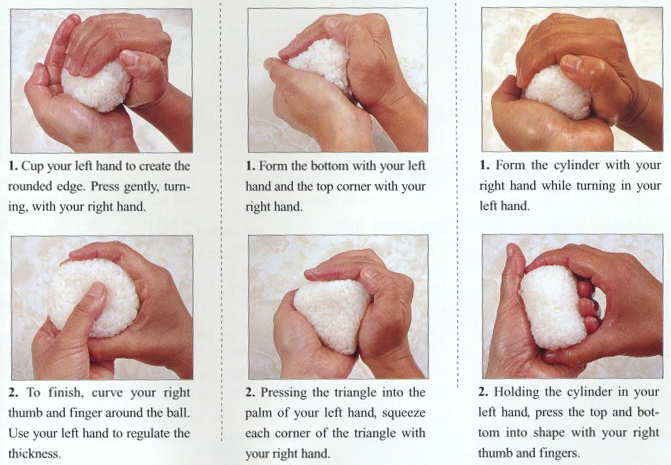Assalamualaikum warahmatullahi wabarakatuh . . .
Today, why don't we learn something about onigiri.
O-nigiri (お握り or 御握り; おにぎり?), also known as o-musubi (お結び; おむすび?), nigirimeshi (握り飯; にぎりめし?) or rice ball, is a Japanese food made from white rice formed into triangular or cylindrical shapes and often wrapped in nori (seaweed). Traditionally, an onigiri is filled with pickled ume (umeboshi), salted salmon, katsuobushi, kombu, tarako, or any other salty or sour ingredient as a natural preservative. Because of the popularity of onigiri in Japan, most convenience stores stock their onigiri with various fillings and flavors. There are even specialized shops which only sell onigiri to take out. Due to the popularity of this trend in Japan, onigiri has become a popular staple in Japanese restaurants worldwide.
Despite common misconceptions, onigiri is not a form of sushi. Onigiri is made with plain rice (sometimes lightly salted), while sushi is made of rice with vinegar, sugar and salt. Onigiri makes rice portable and easy to eat as well as preserving it, while sushi originated as a way of preserving fish.
Usually, onigiri is made with boiled white rice, though it is sometimes made with different varieties of cooked rice, such as:
- o-kowa or kowa-meshi (sekihan): glutinous rice cooked/steamed with vegetables (red beans);
- maze-gohan (lit. "mixed rice"): cooked rice mixed with preferred ingredients;
- fried rice.
Typical fillings are listed below.
- Salt
- Dressed dishes: tuna with mayonnaise, shrimp with mayonnaise, etc.
- Dried fish: roasted and crumbled mackerel (鯖), Japanese horse mackerel (鰺), etc.
- Fried foods: Small sized tempura, cutlet
- Kakuni: dongpo pork
- Dried food: okaka, etc.
- Processed roe: mentaiko, tobiko, caviar, etc.
- Shiokara: squid, shuto, etc.
- Tsukudani: nori, Hypoptychus dybowskii (小女子), Venerupis philippinarum (浅蜊), etc.
- Pickled fruit and vegetables: umeboshi, takana, etc.
- Miso: Sometimes mixed with green onion or spread over and roasted












No comments:
Post a Comment